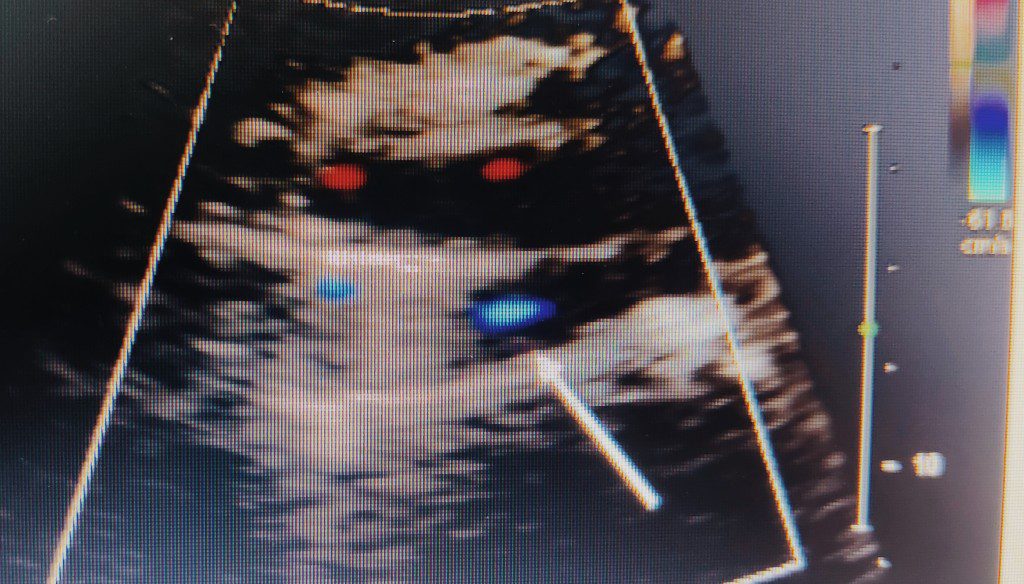Image Question-49
Contents
- 1 The pointer is marked at Aortic Valve Regurgitant jet in Echocardiogram
- 2 Aortic Valve Regurgitant jet is
- 3 What are ‘Washing jets’ in Echocardiogram?
- 4 Washing jets are designed in prosthetic valves to prevent thrombus formation
- 5 How to differentiate Washing jets from pathological regurgitation?
- 6 What is the feature of ‘Normal leakage backflow’?
The pointer is marked at Aortic Valve Regurgitant jet in Echocardiogram
Image of Transthoracic Echocardiogram in a patient with prosthetic valve.

Image of Transthoracic Echocardiogram in a patient with prosthetic valve.
Aortic Valve Regurgitant jet is
A. Minimal Aortic regurgitation
B. Mild Aortic regurgitation
C. Paravalvular Aortic regurgitation
D. Washing jets
What are ‘Washing jets’ in Echocardiogram?
Washing jets are designed in prosthetic valves to prevent thrombus formation
- 10-15%
- Jets low in momentum
- Homogeneous in color,
- Aliasing mostly confined to the base of the jet.
- Bileaflet valves typically have a small amount of normal regurgitation (“washing jet”) designed in part to decrease the risk of thrombus formation.
- A small central jet and two converging jets emanating from the hinge points of the disc can be visualized on color Doppler flow imaging.
How to differentiate Washing jets from pathological regurgitation?
All mechanical valves with the exception of caged ball valves (no longer implanted) have trivial to mild transvalvular regurgitation at the edges of the leaflets.
This “built-in” regurgitation theoretically prevents blood stasis and thrombus formation using a washing effect.
What is the feature of ‘Normal leakage backflow’?
Narrow and Symmetrical jets inside the sewing ring
Normal leakage backflow –
Consists of one jet (Medtronic-Hall valve) or more jets (bileaflet valves)
Narrow and Symmetrical jets inside the sewing ring
Should be distinguished from aberrant paravalvular flow external to the sewing ring.
Aberrant paravalvular flow – External to the sewing ring





